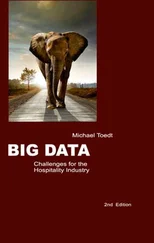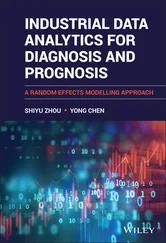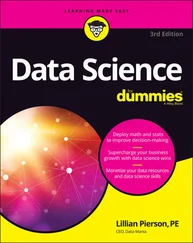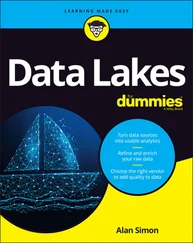Verifying data has long been one of the highest costs associated with collecting and using data. Campaigns that depend on physical or email addresses will have little effect if the target addresses are largely incorrect. Bad data can come from many sources, including mischievous data submission, sloppy data collection, or even malicious data modification. An important aspect of relying on data is putting controls in place that verify the source of any collected data, along with that data’s adherence to collection requirements.
A simple approach to verifying data in a distributed environment is to carry out a simple validation at the source and again at the server as the data is stored in a repository. While validating data at least twice may seem excessive, the practice makes user errors easier to catch and ensures that data received by the server is clean.
 Validating data twice makes it possible for client applications to quickly catch errors, such as too many digits in a phone number or a missing field, while the server handles more complex validation tasks. A server may need access to other related data to ensure that data is valid before storing it in a repository. Server validation could include things such as verifying that order quantities are available in a warehouse and that data wasn’t changed by a malicious agent during transmission from the client.
Validating data twice makes it possible for client applications to quickly catch errors, such as too many digits in a phone number or a missing field, while the server handles more complex validation tasks. A server may need access to other related data to ensure that data is valid before storing it in a repository. Server validation could include things such as verifying that order quantities are available in a warehouse and that data wasn’t changed by a malicious agent during transmission from the client.
One of the reasons data verification is so important is that organizations are relying more and more on their data to direct business efforts. Aligning business activities with expectations based on faulty data leads to undesirable results. In other words, decisions are only as good as the data on which those decisions are based. The “garbage in, garbage out” adage still holds true.
Understanding and Satisfying Regulatory Requirements
The information age offers many new opportunities and just as many (if not more) challenges. The vast amount of data available to organizations of all types empowers advanced decision-making and raises new questions of privacy and ethics. Consumer protection groups have long been voicing concerns about how personal data is being used. In response to discovered abuses and the recognition of potential future abuses, governing bodies around the world have passed regulations and legislation to limit how data is collected and used.
Although collecting a few pieces of information about a customer may seem innocent, it doesn’t take long for accumulated data to paint a picture of an individual’s personal characteristics and behavior. Knowing the past behavior of someone makes it relatively easy to predict the person's future actions and choices. Predicting actions has value for marketing but also poses a danger to an individual’s privacy.
The concern is that personal data has been, and will continue to be, used to classify individuals based on their past behavior. Classifying individuals can be great for marketing and sales purposes. For example, any retailer that can identify engaged couples can target them with ads and coupons for wedding-related items. This type of targeted advertising is generally more productive than general marketing. Advertising budget can be focused on target markets that provide the greatest ROI.
On the other hand, knowing too much about individuals may violate a person’s privacy. One instance of a privacy violation was a result of the Target Corporation’s astute data analysis. Target’s analysts were able to identify expectant mothers early in their pregnancy based on their changing purchasing habits. When a new expectant mother was identified, Target would send unsolicited coupons for baby-related items. In one case, the coupons arrived in the mail before the mother had shared that she was pregnant; her family found out about the pregnancy from a retailer. Privacy is such a difficult issue because legitimate actions can violate a person’s privacy.
Another aspect of privacy is when criminals, or other individuals who deliberately want to operate anonymously, hide their identities from exposure. Privacy may be important to the general population, but it's a necessity for criminal activity. The ability to deny, or repudiate, some action is crucial in avoiding discovery and capture, and to any subsequent defense. Money laundering and fraud are two activities in which privacy and anonymity are desired to obfuscate illegal activity.
On the other hand, law enforcement needs the ability to associate actions with individuals. That’s why laws exist that protect the general public but allow law enforcement to conduct investigations and identify alleged perpetrators.
Protecting the privacy of law-abiding individuals while identifying criminals has become important across a spectrum of organizations. To enable law enforcement to deal with online privacy issues, legislative bodies have passed various laws to address those issues directly.
Examining common privacy laws
Here are a few of the most important privacy-related laws you’ll likely encounter and may be compelled to satisfy:
Children’s Online Privacy Protection Act (COPPA): Passed in 1998, COPPA requires parental or guardian consent before collecting or using private information about children under the age of 13.
Health Insurance Portability and Accountability Act (HIPAA): Passed in 1996, HIPAA modernized the flow of healthcare information and contains specific stipulations on protecting the privacy of personal health information (PHI).
Family Educational Rights and Privacy Act (FERPA): Passed in 1974, FERPA protects access to educational information, including protection for the privacy of student records.
General Data Protection Regulation (GDPR): Passed in 2016 (and implemented in 2018), GDPR is a comprehensive regulation from the European Union (EU) protecting the private data of EU citizens. Every organization, regardless of location, must comply with GDPR to conduct business with EU citizens. The EU citizen must retain control over his or her own data, its collection, and its use.
California Consumer Protection Act (CCPA): Passed in 2018, CCPA has been called “GDPR lite” to imply that it includes many of the requirements of GDPR. CCPA requires any organization that conducts business to protect consumer data privacy.
Anti-Money Laundering Act (AML): AML is a set of laws and regulations that assists law enforcement investigations by requiring financial transactions to be associated with validated identities. AML imposes requirements and procedures on financial institutions that essentially make it very difficult to transfer money without leaving a clear audit trail.
Know Your Customer (KYC): KYC laws and regulations work with AML to ensure that businesses expend reasonable effort to verify the identity of each customer and business partner. KYC helps to discourage money laundering, bribery, and other financial-based criminal activities that rely on anonymity.
Predicting Future Outcomes with Data
Data can unlock lots of secrets. Data you collect through regular interactions with your customers and business partners can help you understand them and better meet their needs and wants. Assuming you have taken measures to protect individual privacy and have permission to collect and use the data, analyzing that data can benefit your organization and your customers (and partners, too).
A common way to use data is to build analytics models that help to explain the data, uncover hidden information, and even predict future behavior. Data analytics is all about using formal methods to unlock secrets that your data is hiding. These secrets aren’t hidden on purpose — they just get lost in the mountains of data you collect. Without a structured approach to examining your data, you might miss some of its value that can lead to increased revenue.
Читать дальше
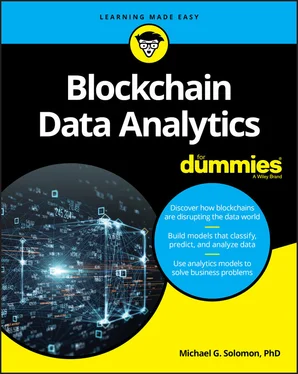
 Validating data twice makes it possible for client applications to quickly catch errors, such as too many digits in a phone number or a missing field, while the server handles more complex validation tasks. A server may need access to other related data to ensure that data is valid before storing it in a repository. Server validation could include things such as verifying that order quantities are available in a warehouse and that data wasn’t changed by a malicious agent during transmission from the client.
Validating data twice makes it possible for client applications to quickly catch errors, such as too many digits in a phone number or a missing field, while the server handles more complex validation tasks. A server may need access to other related data to ensure that data is valid before storing it in a repository. Server validation could include things such as verifying that order quantities are available in a warehouse and that data wasn’t changed by a malicious agent during transmission from the client.